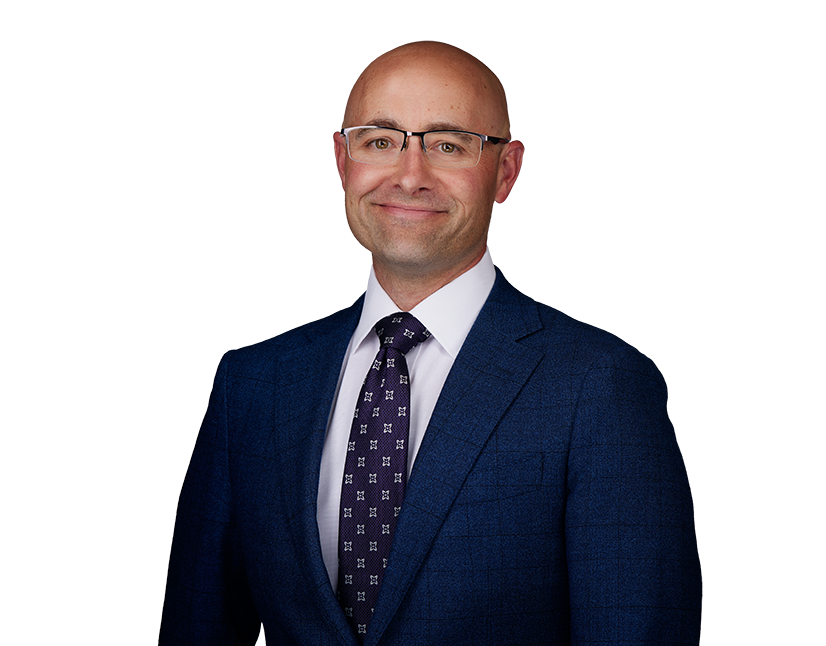When markets move the way they have in recent weeks, the notion of diversification often comes back into focus. There are many ways investors can embrace diversification along their financial journeys. At TCI, one of the ways we diversify is by taking a global approach to investing.
This global approach isn’t about chasing returns in far-off markets just for the sake of it. It’s about finding opportunities around the world in an intentional way while balancing risk, cost, and long-term potential.
Since diversification is back in the spotlight, let’s look at what makes up global funds, the journey the currency takes and what can happen if they’re not part of your portfolio. While no one can predict which markets will lead in any given year, staying disciplined and diversified helps keep you positioned for growth, wherever it may come from.
Global Funds: Building Blocks for a Thoughtful Portfolio
By definition, global funds are investment funds that hold companies from all over the world, including the United States. The goal is to provide investors with exposure to a broad mix of markets and industries.
One example of a global fund is Vanguard’s Global Equity Fund (VHGEX). While not commonly found in TCI client portfolios, it serves as a helpful benchmark for understanding what global investing looks like in practice. The fund holds companies across more than 30 countries, including Canada, the U.K., Japan, Germany, and Switzerland, and spans a range of sectors, from technology and healthcare to energy and financials.
Despite its international reach, many of the names in the fund may feel familiar to U.S. investors. Companies like Nvidia, based in the U.S., and Taiwan Semiconductor, headquartered in Taiwan, are both significant holdings. While they operate in different regions, both companies dominate their respective markets and generate consistent profits, key traits we look for in long-term investments.
VHGEX provides a helpful illustration of how global investing is commonly approached: broad global diversification based on market size. At TCI, our investment philosophy builds on that foundation by taking a more refined approach. Instead of weighting portfolios by company size alone, we tilt toward areas of the market with stronger long-term return potential, such as smaller companies, value stocks and companies with high profitability. We also select funds based on their transparency and consistent reporting standards, ensuring strong governance practices backed by reliable data.
In other words, global exposure is just the beginning. The way we implement it, intentionally and with evidence, reflects TCI’s investment philosophy.
How Global Investing Helps Manage Risk and Opportunity
When we think about international diversification within a portfolio, it’s essential to remember that no one can predict which countries or markets will outperform each year, or which markets may retract.
Regardless, as stewards of your investment objectives, it’s our duty to find returns for clients. Being in multiple investable markets across the globe helps us access return opportunities, while mitigating some risks. Around the world, businesses are being built, products are being sold, and economies are moving forward.
Along the mission to find returns around the world for clients, currencies also come into play.
When you invest in a global fund, your money is working in multiple markets and currencies. Currencies are always in motion, influencing returns in ways that are hard to predict.
For example, if a European stock rises in value (in euros), but the U.S. dollar strengthens against the euro, your return when converted back to dollars may not be as high as expected. The opposite is also true, a weaker dollar can boost returns on international investments. When you bring proceeds back to the U.S., you experience an amplifying or reducing effect based on the currency exchange. Over time, these shifts tend to balance out as part of a diversified portfolio.
It’s not about hitting home runs. It’s about trying to consistently hit singles and doubles to keep the runners moving. Investing globally is one way to stay in the game and be prudent investors.
Remember the “Lost Decade”
Many U.S. investors naturally gravitate toward U.S. stocks, it’s what they know, and what feels most familiar. This tendency is known as “home bias.” It isn’t unique to the U.S. either, in nearly every country investors tend to favor their own markets. Yet, history has shown us that relying too heavily on any one market can come at a cost. One of the clearest examples? The early 2000s, during what became known as the “Lost Decade.”
If you were invested from 2000 to 2010, you probably don’t need a reminder of why it was called the “Lost Decade.” There was the dot.com bubble, 9/11 and the financial crisis of 2008.
A dollar invested in the S&P 500 at the beginning of the decade fell to about 98 cents ten years later. The weighted return over those 10 years was basically zero.
Over that same period, a globally diversified 60/40 portfolio produced an annualized return of about 7.5%, while an all-equity global portfolio returned closer to 8%. Using the Rule of 72, a simple way to estimate how long it takes an investment to double in value, that 8% return suggests investors could have doubled their money in roughly nine years. That’s exactly what happened. While globally diversified investors saw growth, those who invested too heavily in one market missed out.
There are those who say that buying a fund comprised solely of S&P 500 equities and forgetting it is a sound investing approach. I agree that it’s better than trying to be a stock picker. However, a blended global portfolio or an approach with fixed income and rebalancing would likely be better. The key is to have a long-term perspective, to take calculated, data-driven risks to capture long-term returns.
Staying Disciplined, Diversified, and Goal-Focused
Our TCI investment philosophy is about low risk, maximizing rewards, knowing you and helping you fulfill your goals. Global funds represent just one piece of the puzzle.
I don’t have a crystal ball. No one does. No one knows where markets will go, the best advice is to be disciplined and diversified, to take a long-term approach and try to mitigate risk as much as possible.
A well-diversified global portfolio accounts for both market performance and currency effects. It positions you to access opportunities outside the U.S., while helping to manage risk, enhance long-term growth and achieve your personal and financial goals.
This material has been prepared for informational purposes only and is not intended to provide or to be relied upon as tax advice. TCI is neither a law firm, nor a certified public accounting firm, and no portion of its services should be construed as legal or accounting advice. TCI does not prepare or file tax returns for its clients. At all times, you should defer to the advice of your tax preparation professional. No client or prospective client should assume that any information contained herein serves as the receipt of, or a substitute for, personalized advice from TCI, or from any other investment professional.


